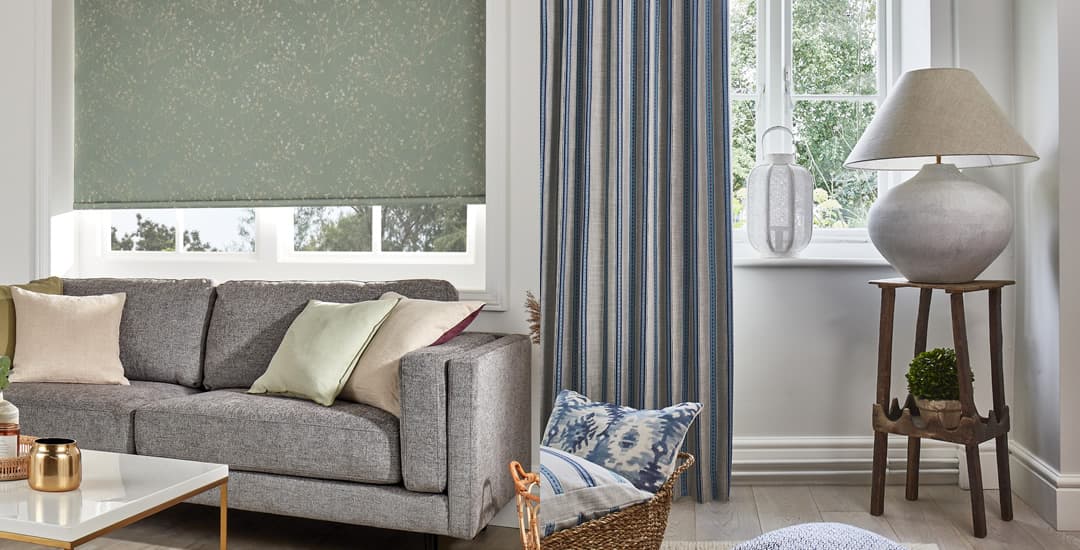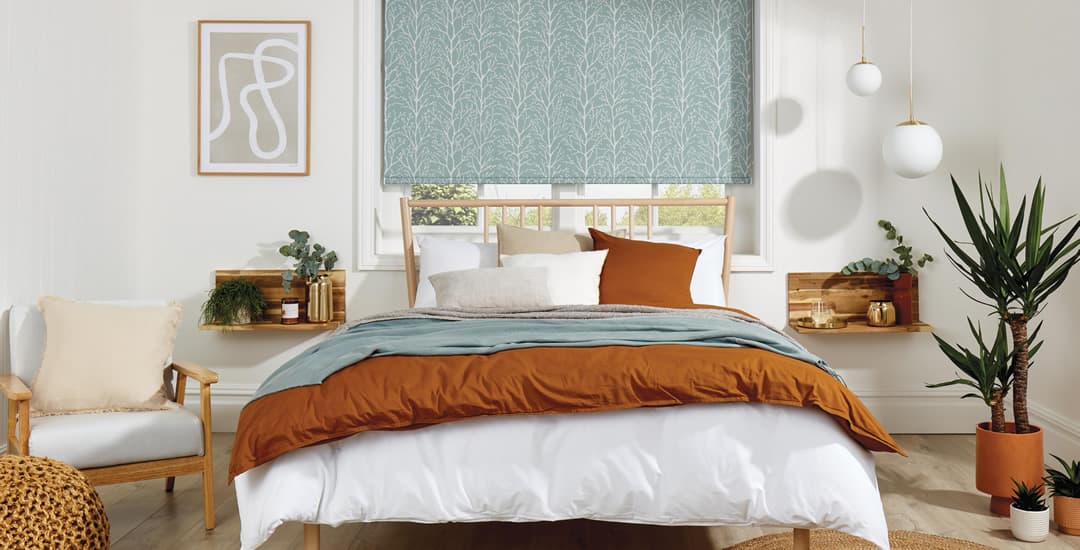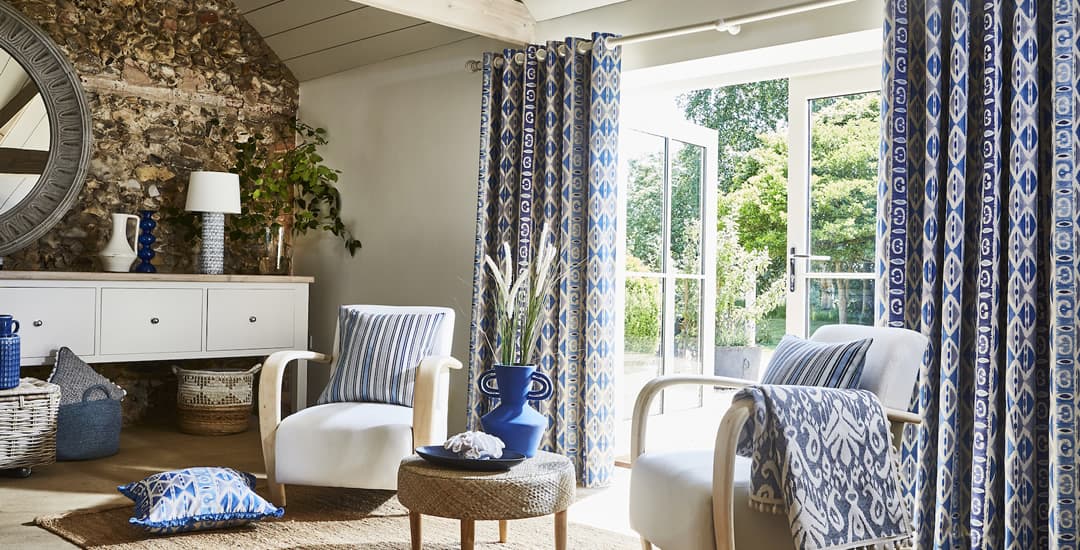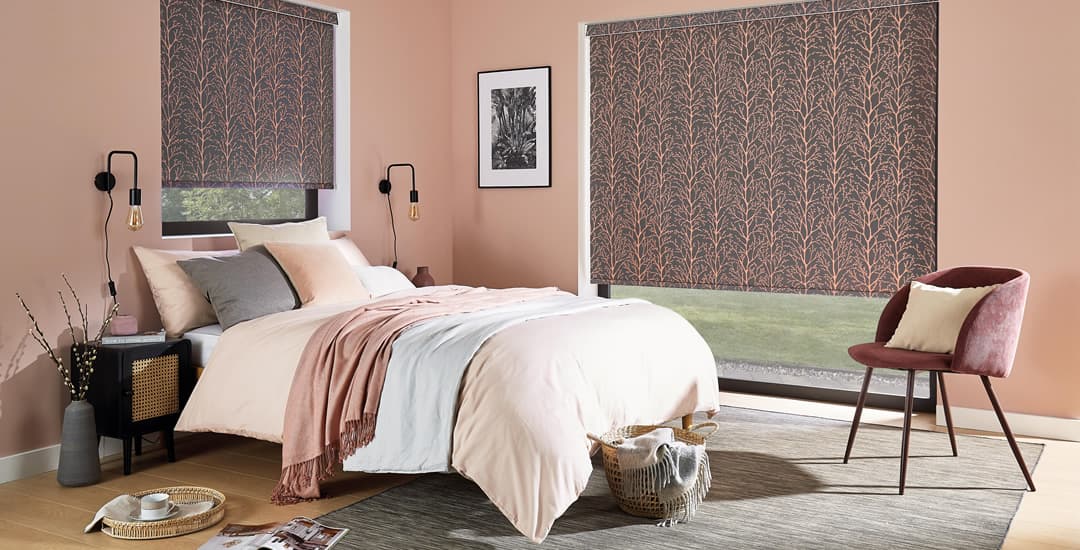
Is it better to have blackout curtains or blinds? Blackout blinds are always more effective at achieving a full blackout, for several reasons; the first being that there is never the possibility of leaving a gap in the middle when you close them.
This blog post will look at blackout blinds vs. blackout curtains, covering the pros and cons if you’re hoping to achieve a full blackout in your room.
Is it better to have blackout curtains or blinds to achieve a full blackout?

A blackout blind will give you the best chances of success here. If you want to achieve a full blackout with just one item – that is, one blind or one pair of curtains – you should pick a blind. If you choose the right type of blackout blind and hang it correctly (outside of the window recess with a margin of at least 10cm over the wall on all four sides) you will achieve a full blackout or so close as to be indiscernible from one in about 90% of cases.
The odds of managing the same with a lone pair of blackout curtains are rather lower; but either way, the only sure-fire guaranteed way to achieve a total blackout if you still get some level of light leakage even with a blackout blind hung over the window recess is to use two blackout blinds; one inside of the window recess and one over it.
Some people who go down this route actually elect to have a blackout blind inside of the recess and a pair of blackout curtains over it, and this is also effective as the inner blind negates any light leakage issues from a gap in the curtains or around the sides.
Blackout blinds vs. blackout curtains; why aren’t curtains as good a choice as blinds?

When it comes to the pros and cons of blackout blinds vs. blackout curtains, there are a number of points against curtains, both specifically in terms of their blackout abilities and more generally too.
The potential gap where the curtains meet in the middle is a big issue in many cases; however carefully you think you’ve closed the curtains, if you have got it wrong whilst closing the curtains in the dark, you will find out the hard way when it gets light!
Blackout curtains are also more likely than blinds to have gaps between the curtain and the wall at the sides and top, even if you order a pair with a good margin of side coverage too, which will also let light in. This is the case even with curtains hung over the window recess, but particularly with curtains hung inside of the recess.
Curtains are also more likely to be moved or blown about in a breeze, which doesn’t really happen with closed blinds, with the potential exception of vertical blinds.
Curtains can’t be used to filter light during the day either, only to let it in or block it entirely; while with some types of blackout blinds, these can be used to filter light too.
Another larger issue is that there’s no such thing as waterproof curtains, which means that if you want to achieve a blackout in a kitchen or bathroom, curtains won’t cut it. This also means that curtains are challenging to clean, as you can’t just wipe them off like you can with waterproof blinds.
Finally, there are many different types of blinds, both in terms of functionality and general style, whilst curtains all look pretty much the same in style, fabric choice and design notwithstanding; this means that you’re limited in terms of your design options, and curtains can look somewhat old fashioned or out of place in more modern rooms or homes.
Which is best, blackout blinds or blackout curtains?

Overall, there’s a lot more going for blackout blinds than blackout curtains, both in terms of how effectively your choice will block the light and in various other respects too.
You can also pair up a blind with curtains over the top if you want to compromise, or if you prefer the appearance of curtains but also want to ensure a total blackout.




